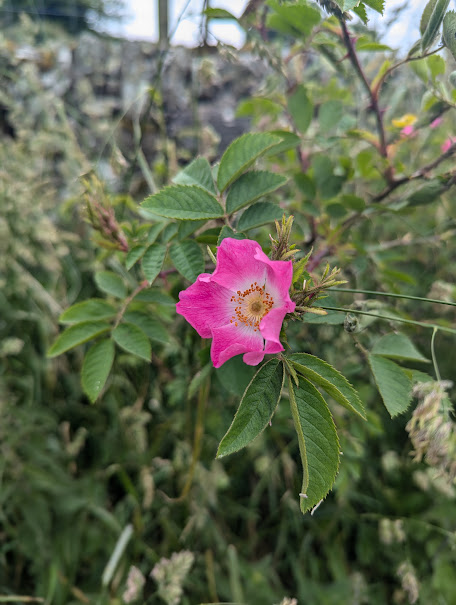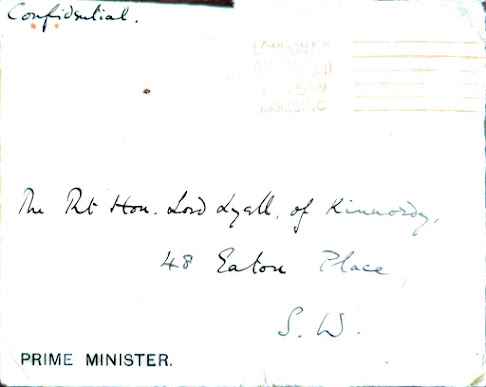Further adventures in trying to master wild flower identification. I often see this small purple flower growing at ground level, but have never given it much thought. Down on my hands and knees this evening with the 7x digital zoom on my mobile, the flowerhead is a complete revelation: looking almost like an exotic orchid. The Seek App tells me this is the Common Self-Heal. It is edible and used in Chinese medicine. Never-the-less, I doubt it could provide a substantial meal - look at the Clover leaf in the background for scale! :-)
 |
| Common Self-Heal (Prunella vulgaris) |
Even I can identify this deep pink beauty as the Dog or Wild Rose. Amazingly Seek could not get any further than the rose "family". A tiny victory for me. :-)
 |
| Dog Rose (Rosa canina) |
On my botanical peregrinations, I could not resist the following vista of the Daisy and Buttercup meadow below the castle. This evening was not sunny like yesterday, with the low cloud smudging the tops of the nearby hills, but it was pleasantly warm in a T-shirt even with the touch of mist on the skin.
 |
| Meadow Buttercups (Ranunculus acris) and Daisies (Bellis perennis) |














